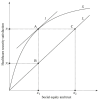How do Chinese people perceive their healthcare system? Inequality in public satisfaction with healthcare security
- PMID: 40376066
- PMCID: PMC12078328
- DOI: 10.3389/fpubh.2025.1529964
How do Chinese people perceive their healthcare system? Inequality in public satisfaction with healthcare security
Abstract
Background: Satisfaction with healthcare security is a critical indicator of the effectiveness of health systems. Social equity and trust and the financial burden of healthcare are key socioeconomic factors that can significantly influence residents' perceptions of healthcare security. This study aims to investigate the impact of social equity and trust and medical burden on satisfaction with healthcare security and to analyze their potential interaction mechanisms.
Methods: Using data from 7,052 participants in the 2021 China General Social Survey, this study employed machine learning methods, including neural networks (NN), random forests (RF), and logistic regression (LR), to predict and classify satisfaction with healthcare security. Additionally, causal inference techniques were applied to identify the key determinants and estimate their effects on satisfaction levels, thereby uncovering the underlying causal mechanisms.
Results: The predictive performance of the three machine learning methods was similar (p < 0.001). In the original models, the AUCs for LR, NN, and RF were 0.549, 0.563, and 0.534, respectively. After including factors related to social equity and trust, the AUCs for LR, NN, and RF improved to 0.633, 0.638, and 0.611, respectively. Among the three ML models, medical expenses and social equity and trust were identified as the most influential factors. Further causal analysis confirmed that higher levels of social equity and trust increased satisfaction with healthcare security, while a heavier medical burden reduced it. The analysis also revealed significant marginal effects, suggesting that the impact of social equity and trust varied across different levels.
Conclusion: This study highlights the complex relationship between social equity and trust, medical burden, and satisfaction with healthcare security, offering theoretical support for understanding residents' perceptions of healthcare security in various social contexts.
Keywords: healthcare security; machine learning; medical expenses; satisfaction; social equity and trust.
Copyright © 2025 Bi, Tan, Guo, Peng, Yang, Weng and Chen.
Conflict of interest statement
The authors declare that the research was conducted in the absence of any commercial or financial relationships that could be construed as a potential conflict of interest.
Figures




Similar articles
-
The Influence of Subjective Socioeconomic Status on Life Satisfaction: The Chain Mediating Role of Social Equity and Social Trust.Int J Environ Res Public Health. 2022 Nov 25;19(23):15652. doi: 10.3390/ijerph192315652. Int J Environ Res Public Health. 2022. PMID: 36497727 Free PMC article.
-
Effects of security on social trust among Chinese adults: Roles of life satisfaction and ostracism.J Soc Psychol. 2021 Sep 3;161(5):560-569. doi: 10.1080/00224545.2020.1871312. Epub 2021 Jan 7. J Soc Psychol. 2021. PMID: 33407041
-
Exploring Chinese Elderly's Trust in the Healthcare System: Empirical Evidence from a Population-Based Survey in China.Int J Environ Res Public Health. 2022 Dec 8;19(24):16461. doi: 10.3390/ijerph192416461. Int J Environ Res Public Health. 2022. PMID: 36554341 Free PMC article.
-
A nationwide study of the impact of social quality factors on life satisfaction among older adults in rural China.Sci Rep. 2024 May 21;14(1):11614. doi: 10.1038/s41598-024-61398-4. Sci Rep. 2024. PMID: 38773137 Free PMC article.
-
Social Security Satisfaction and People's Subjective Wellbeing in China: The Serial Mediation Effect of Social Fairness and Social Trust.Front Psychol. 2022 Apr 4;13:855530. doi: 10.3389/fpsyg.2022.855530. eCollection 2022. Front Psychol. 2022. PMID: 35444600 Free PMC article.
References
MeSH terms
Supplementary concepts
LinkOut - more resources
Full Text Sources
Medical

